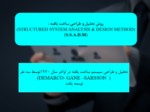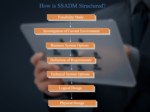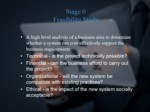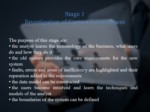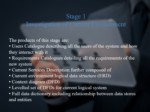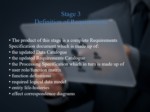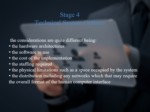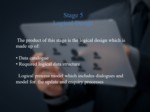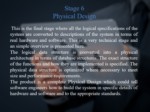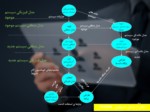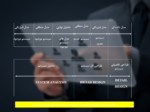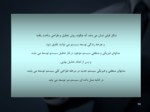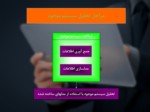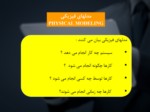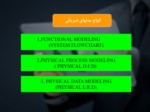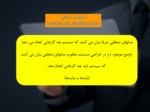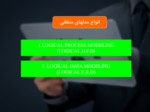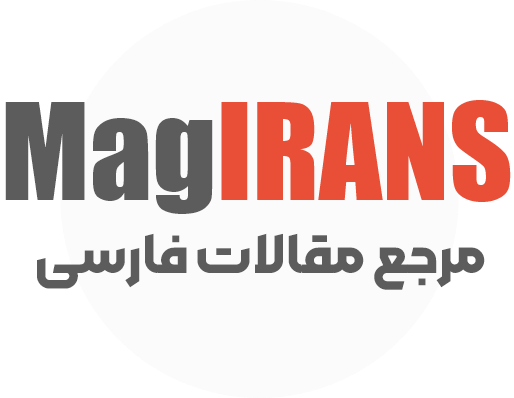بخشی از پاورپوینت
--- پاورپوینت شامل تصاویر میباشد ----
اسلاید 1 :
A high level analysis of a business area to determine whether a system can cost effectively support the business requirements
Technical - is the project technically possible?
Financial - can the business afford to carry out the project?
Organizational - will the new system be compatible with existing practices?
Ethical - is the impact of the new system socially acceptable?
اسلاید 2 :
The purpose of this stage are:
the analyst learns the terminology of the business, what users do and how they do it
the old system provides the core requirements for the new system
faults, errors and areas of inefficiency are highlighted and their reparation added to the requirements
the data model can be constructed
the users become involved and learn the techniques and models of the analyst
the boundaries of the system can be defined
اسلاید 3 :
The products of this stage are:
Users Catalogue describing all the users of the system and how they interact with it
Requirements Catalogues detailing all the requirements of the new system
Current Services Description further composed of
Current environment logical data structure (ERD)
Context diagram (DFD)
Levelled set of DFDs for current logical system
Full data dictionary including relationship between data stores and entities
اسلاید 4 :
The options consider the following:
the degree of automation
the boundary between the system and the users
the distribution of the system, for example, is it centralized to one office or spread out across several?
cost/benefit
impact of the new system
اسلاید 5 :
The product of this stage is a complete Requirements Specification document which is made up of:
the updated Data Catalogue
the updated Requirements Catalogue
the Processing Specification which in turn is made up of
user role/function matrix
function definitions
required logical data model
entity life-histories
effect correspondence diagrams
اسلاید 6 :
the considerations are quite different being:
the hardware architectures
the software to use
the cost of the implementation
the staffing required
the physical limitations such as a space occupied by the system
the distribution including any networks which that may require
the overall format of the human computer interface
اسلاید 7 :
The product of this stage is the logical design which is made up of:
Data catalogue
Required logical data structure
Logical process model which includes dialogues and model for the update and enquiry processes
اسلاید 8 :
This is the final stage where all the logical specifications of the system are converted to descriptions of the system in terms of real hardware and software. This is a very technical stage and an simple overview is presented here.
The logical data structure is converted into a physical architecture in terms of database structures. The exact structure of the functions and how they are implemented is specified. The physical data structure is optimized where necessary to meet size and performance requirements.
The product is a complete Physical Design which could tell software engineers how to build the system in specific details of hardware and software and to the appropriate standards.
اسلاید 9 :
شکل قبلی نشان می دهد که چگونه روش تحليل و طراحی ساخت يافته
و چرخه زندگي توسعه سيستم می توانند تلفیق شود.
مدلهای فیزیکی و منطقی سیستم موجود در فاز تحلیل سیستم توسعه می یابند
و پس از انجام تحلیل نهایی،
مدلهای منطقی و فیزیکی سیستم جدید در مرحله طراحی کلی سیستم توسعه می یابند.
در ادامه مدل داده ای سیستم نیز توسعه می یابد.
اسلاید 10 :
مدلهای فیزیکی بیان می کنند :
سیستم چه کار انجام می دهد ؟
کارها چگونه انجام می شود ؟
کارها توسط چه کسی انجام می شود ؟
کارها چه زمانی انجام می شوند؟


